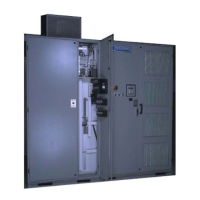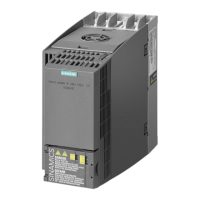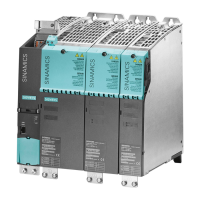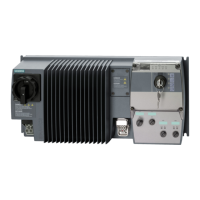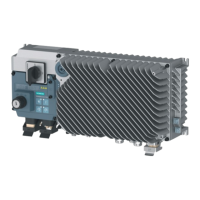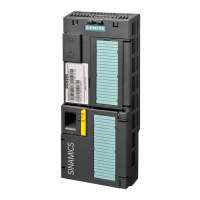Synchronous Motors (SM) and Induction Motors (IM) may require a high starting torque mode:
• SMs have an externally generated ux source that can be pulsed to provide enough feedback
to lock onto the ux angle at standstill. SMs have poor starting torque characteristics.
• IMs have a ux created through coupling across the air gap and can be controlled directly.
• In V/Hz control mode SMs and IMs require a high starting torque mode: to overcome static
friction (stiction) that is high in either the motor or the load; or when a large inertial load is
connected; or when operating a motor on long cables in which a signicant amount of load
impedance is in the cables.
0
7UDQVIRUPHU
N9WRN9
&DEOH
NP
&DEOH
NP
8PELOLFDO
NP
7UDQVIRUPHU
N9WRNY
(OHFWULFDO0RWRU
N90:
$'9ROWDJH
6RXUFHPRGHOHG
DVVLQXV
7RSVLGHFDEOH
NP
09-XPSHU
NP
Figure 8-28 High Starting Torque Mode Example System
HST Secondary Current Level
The HST secondary current level is for implementation after the initial starting state, and before
the control loops are enabled to prevent saturation of transformers used between the output of
the drive and the connected motor due to the high currents and associated voltages. Saturation
can cause distortion and excessive losses. Once the load has begun to move, the high torque is
no longer needed and so then the secondary current level is adequate.
The secondary current level is implemented through parameter Trq Current 2 (2965).
0$*&XUUHQW,GV
0RWRU6SHHG
3RLQWRIPRWRUVSHHG
VWDELOL]DWLRQ
754&XUUHQW,TV
1RORDG
FXUUHQW
5DWHGVOLS
0D[LPXP754
FXUUHQW
0LQLPXPVSHHG
2SHQORRSFRQWURO
6HFRQGOHYHOFXUUHQWSDUDPHWHU
Figure 8-29 Modied High Starting Torque Mode
Advanced Operating Functions
8.22 High Performance Control
NXGPro+ Control Manual
322 Operating Manual, A5E50491925A
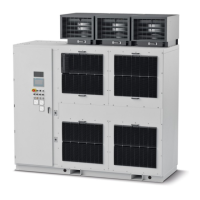
